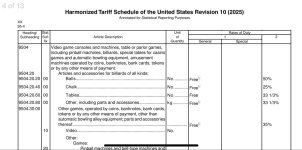Agree, but I'd have to add another qualification. Quality of the wood. A nameless country can put out a lot of cues by using inferior wood. Wood not harvested in the right place, not harvested in the right time period, etc. In other words, it might look ok, but it's green. Then the cue can be made, and it warps seriously after only a year or so.If a cue is made in the USA the added cost of foreign components and shop supplies won't be fifty dollars. The cost of pool cues is mostly time and artistry.
American manufacturers may increase prices just based on market pricing. Debatable if it is fair or not, but a builder that is charging 150% of what a chinese cue costs may well keep on charging 150% of what a chinese cue costs. Makes sense in a way, the price is one indication of quality. Some always think a higher price means higher quality.
A local story: My storage company built a new multimillion dollar building next to my storage unit about a year ago. Twice they have increased the cost of my rent due to the increased cost of "goods". First damned time I have heard of a new building being called goods. Do they really think us renters are stupid? Fixing to vote with my wallet and my feet! Not that they will care but once they don't have any leverage I will tell them that it wasn't the cost increases as much as their bullshit rationale that caused me to leave. American cue builders may claim cost increases too, but real cost increases will be extremely minor.
Hu
I won't mention the cue maker, but his shafts cost a grand each because they are only harvested in a section of Michigan and Canada, and only in the month of February, and only with a certain diameter of the tree. The knock off stuff? They'll take any wood that looks like wood.

